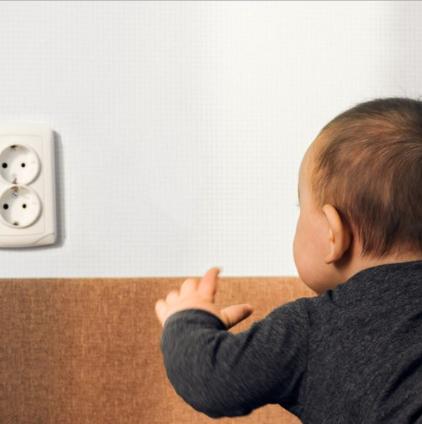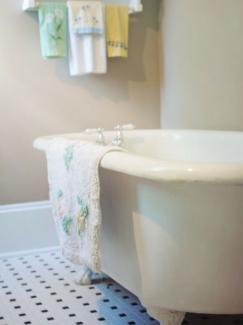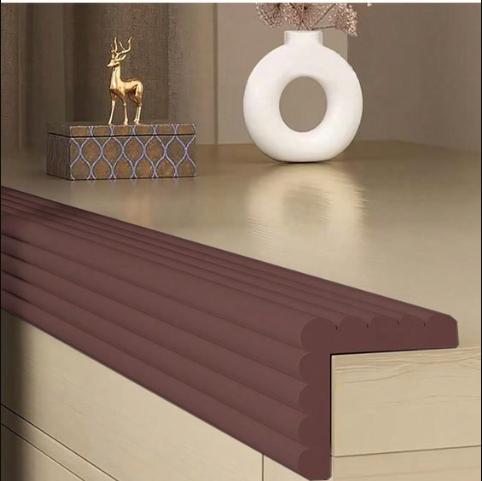



Table of Contents
- Introduction
- Why Baby Proofing is Important
- When to Start Baby Proofing
- Essential Baby Proofing Steps
- Baby Proofing Specific Areas
- Baby Proofing Products
- Additional Baby Proofing Products
- Tips for Effective Babyproofing
- Conclusion
- Faq's
As parents, ensuring the safety of our little ones is a top priority. Baby proofing your home is essential to provide a secure environment for your child to explore and grow. This guide covers everything you need to know about babyproofing your home, from essential tips to specific products and areas that need attention.
Introduction
Baby Proofing is the process of making your home safe for your infant or toddler by reducing hazards and preventing injuries. As babies grow and become more mobile, their natural curiosity can lead them into potentially dangerous situations. From exploring electrical outlets to reaching for sharp objects, the risks are numerous and varied.
With curiosity and mobility, babies are prone to accidents, making it crucial to take preventive measures. Proper babyproofing involves identifying and mitigating these hazards to ensure a safe environment for your child to explore and develop. This comprehensive guide will help you understand the importance of baby proofing and provide practical tips to secure your home effectively.
Why Baby Proofing is Important
 Why Baby Proofing is important
Why Baby Proofing is important
Image Source: Pinterest
Understand the importance of baby proofing your home with these points:
Safety
- The primary reason for baby proofing is to protect your child from potential hazards. Homes are filled with objects and areas that can pose serious risks to a curious and mobile child. From sharp edges and small objects that can be choking hazards to electrical outlets and household chemicals, the dangers are numerous. Babyproofing helps eliminate or mitigate these risks, ensuring that your child can move around safely. By securing furniture, covering sharp edges, installing safety gates, and using childproof locks, you create a safer environment that significantly reduces the likelihood of accidents and injuries.
Peace of Mind
- Knowing that your home is safe allows parents to relax and enjoy their time with their child. Parenting is a demanding job, and the constant worry about your child's safety can add unnecessary stress. Babyproofing your home provides peace of mind, knowing that you have taken steps to protect your child from common household dangers. This reassurance enables parents to focus more on bonding and engaging with their child, rather than constantly worrying about potential accidents. The security of a baby proofed home allows for a more relaxed and enjoyable parenting experience.
Promotes Independence
- A baby proofed home enables your child to explore and learn independently in a safe environment. As babies grow, they naturally want to explore their surroundings. This exploration is crucial for their development, as it helps them learn about their environment, develop motor skills, and build confidence. By removing hazards and creating a secure space, you allow your child to roam freely and safely. This independence fosters their cognitive and physical development, as they can interact with their surroundings without constant restrictions. A well-baby proofed home encourages a child's natural curiosity and supports their growth into confident and capable individuals.
When to Start Baby Proofing
 When to start Baby Proofing
When to start Baby Proofing
Ideally, safe proofing your home for the baby should begin before your baby begins to crawl, typically around 6 to 9 months old. This is the age when babies become more mobile and start exploring their environment, increasing the risk of accidents. By starting early, you ensure that your home is ready for their newfound mobility, and you can address potential hazards before they pose a risk.
But remember, it's never too late to make the home safer for your kid. Even if your baby has already started crawling or walking, implementing baby proofing measures can significantly reduce the risk of injuries. Assess your home for potential dangers and prioritize areas that pose the highest risks, such as the kitchen, bathroom, and stairs.
Also Read: Decor Ideas for Kids' Rooms: 10 Tips for a Fun and Functional Space
Essential Baby Proofing Steps
These are the essential steps to baby proofing your home
1. Secure Furniture and Appliances
 Anchoring Furniture
Anchoring Furniture
Image Source: Pinterest
- Anchoring Furniture: Use wall straps or brackets to secure heavy furniture like bookshelves, dressers, and TV stands to the wall. This prevents them from tipping over if your child tries to climb or pull on them. Ensure that any furniture taller than three feet is anchored to provide maximum safety.
- Appliance Safety: Ensure large appliances like refrigerators, stoves, and washing machines are securely positioned and cannot tip over. Use anti-tip brackets or straps to stabilize these appliances. Always ensure that the appliances are properly installed and regularly checked for stability.
2. Install Safety Gates
 Safety Gates
Safety Gates
Image Source: Pinterest
- Stair Safety: Place safety gates at the top and bottom of stairs to prevent falls. Choose gates that are hardware-mounted for better security, especially at the top of the stairs, where a fall could result in serious injury. Avoid pressure-mounted gates at the top of stairs as they are not as secure.
- Room Barriers: Use gates to block off rooms that are not baby proofed or areas with potential hazards. For example, you might want to block off the kitchen or home office. This helps to contain your child's exploration to safer areas of your home.
3. Cover Sharp Edges and Corners
 Corner Protector Guard
Corner Protector Guard
Image Source: Pinterest
- Corner Guards: Install corner guards on furniture with sharp edges to prevent injuries. This is especially important for low furniture like coffee tables and TV stands that your child can easily reach. Corner guards are typically made of soft materials that cushion any impact.
- Edge Bumpers: Use edge bumpers on tables, countertops, and other surfaces to protect your child from sharp edges. These bumpers are easy to install and provide a layer of protection against bumps and bruises.
4. Use Childproof Locks and Latches
 Drawer Latches
Drawer Latches
Image Source: Pinterest
- Cabinet Locks: Install childproof locks on cabinets containing dangerous items like cleaning supplies, medicines, and sharp objects. There are various types of locks available, including magnetic locks, adhesive locks, and slide locks, each suitable for different types of cabinets and drawers.
- Drawer Latches: Use latches on drawers to prevent access to dangerous items. These latches can be installed inside drawers and are designed to keep them securely closed, making it difficult for little hands to open them.
5. Electrical Safety
 Plug Socket Protector
Plug Socket Protector
Image Source: Pinterest
- Outlet Covers: Place outlet covers on all unused electrical outlets to prevent electrical shocks. Choose outlet covers that are difficult for children to remove. Alternatively, you can install tamper-resistant outlets that automatically block access to the electrical contacts.
- Cord Management: Keep electrical cords out of reach and use cord organizers to prevent entanglement. Secure cords to the wall or behind furniture using cord clips or cable management systems. Avoid leaving cords hanging loosely where they can be pulled or chewed on.
6. Prevent Drowning Hazards
 Baby Proof Your Bathtub
Baby Proof Your Bathtub
Image Source: Pinterest
- Bathroom Safety: Always supervise your child in the bathroom. Use toilet locks to prevent them from opening the toilet lid, and keep the bathroom door closed when not in use to restrict access. Store all bathroom cleaning products and medications out of reach.
- Bathtub Safety: Use non-slip mats in the bathtub and never leave your child unattended during bath time. Ensure that the water temperature is safe (below 120°F) to prevent burns, and consider using a bath seat or ring for added stability. Always keep a hand on your baby during bath time, and have all necessary items within arm's reach to avoid leaving your child alone.
Additional Tips
- Windows and Balcony Safety: Install window guards to prevent falls and always keep windows locked. Ensure that balconies are secured with childproof locks and that there are no climbable objects near the railings.
 Baby Proof Balcony
Baby Proof Balcony- Fire Safety: You can install smoke detectors and carbon monoxide detectors throughout your home. Keep fire extinguishers accessible and ensure that your child is always supervised around open flames, such as candles or fireplaces.
Baby Proofing Specific Areas
Living Room
- Furniture Anchoring: Secure all large furniture to the wall.
- Sharp Edges: Use corner guards on coffee tables and TV stands.
- Electrical Safety: Cover all outlets and manage cords.
Kitchen
- Cabinet Locks: Secure cabinets with cleaning supplies and sharp objects.
- Stove Safety: Utilize stove knob covers and keep pot handles turned inward.
- Appliance Locks: Install locks on ovens, refrigerators, and dishwashers.
Nursery
- Crib Safety: Make sure the crib meets current safety standards. Avoid using drop-side cribs.
- Toy Safety: Keep small toys and objects out of reach to prevent choking hazards.
- Window Safety: Use window guards and keep the crib away from windows.
Bathroom
- Toilet Locks: Install toilet locks to prevent drowning hazards.
- Medicine Safety: Keep all medicines and toiletries in locked cabinets.
- Water Temperature: Set your water heater to a safe temperature (below 120°F) to prevent burns.
Bedroom
- Furniture Anchoring: Secure dressers and wardrobes to the wall.
- Electrical Safety: Cover outlets and manage cords.
- Window Safety: Use window guards and keep furniture away from windows.
Baby Proofing Products
Safety Gates
 Safety Gates
Safety Gates
Image Source: Pinterest
- Adjustable Gates: Safety gates are essential for blocking off hazardous areas, such as stairs and certain rooms. Adjustable gates come in various sizes and can be installed at the top and bottom of stairs, as well as in doorways. There are two main types: pressure-mounted and hardware-mounted. Pressure-mounted gates are easy to install and move, making them ideal for temporary barriers. Hardware-mounted gates, which are screwed into the wall, provide a more secure fit and are recommended for the top of stairs.
Corner Guards and Edge Bumpers
 Edge Bumpers
Edge Bumpers
Image Source: Pinterest
- Soft Guards for Sharp Edges: Corner guards and edge bumpers are designed to cushion sharp corners and edges on furniture, countertops, and other surfaces. Made from soft, impact-absorbing materials, they help prevent injuries from falls and bumps. These guards are typically easy to install with adhesive backing and can be found in various colors to match your home décor.
Cabinet and Drawer Locks
 Drawer Locks
Drawer Locks
Image Source: Pinterest
- Various Types of Locks: To keep dangerous items like cleaning supplies, medicines, and sharp objects out of reach, cabinet and drawer locks are crucial. There are several types of locks available:
- Magnetic Locks: Installed inside cabinets and drawers, these locks require a magnetic key to open, making them invisible from the outside and highly effective.
- Adhesive Locks: These locks are easy to install without tools and can be used on various types of cabinets and drawers.
- Slide Locks: Ideal for double-door cabinets, slide locks fit over the handles and prevent the doors from being opened.
Outlet Covers
 Outlet Covers
Outlet Covers
Image Source: Pinterest
- Different Styles of Outlet Covers: Outlet covers prevent children from inserting objects into electrical outlets, reducing the risk of electrical shock. There are various styles available:
- Plug-In Outlet Covers: Simple covers that plug into unused outlets and are difficult for children to remove.
- Box Outlet Covers: Enclose the entire outlet and plug, preventing access to both the outlet and the plugged-in device.
- Tamper-Resistant Outlets: Replace existing outlets with tamper-resistant versions that have built-in shutters to block access to the electrical contacts.
Appliance Locks
 Appliance Locks
Appliance Locks
Image Source: Pinterest
- Locks for Refrigerators, Ovens, and Dishwashers: Appliance locks are designed to prevent children from opening and accessing dangerous appliances. These locks are typically adhesive-based and can be easily installed on:
- Refrigerators: Prevent your child from opening the fridge and accessing potentially harmful items.
- Ovens: Keep the oven door securely closed, reducing the risk of burns.
- Dishwashers: Prevent access to sharp utensils and cleaning agents.
Furniture Straps
 Furniture Straps
Furniture Straps
image Source: Pinterest
- Straps to Secure Heavy Furniture: Furniture straps are used to anchor heavy furniture, such as bookshelves, dressers, and TV stands, to the wall. These straps prevent furniture from tipping over if a child tries to climb or pull on them. Installation is straightforward, and the straps are typically adjustable to fit different furniture sizes.
Non-Slip Mats
 Non-Slip Mat
Non-Slip Mat
- Mats for Bathtubs and Floors: Non-slip mats are essential for preventing slips and falls in wet areas like the bathroom and kitchen. These mats come in various sizes and designs:
- Bathtub Mats: Designed to provide traction in the bathtub, preventing slips during bath time. They often have suction cups to keep them securely in place.
- Floor Mats: Ideal for areas that may get wet, such as near sinks or entryways. These mats provide a stable, non-slip surface to walk on.
Additional Baby Proofing Products
Door Knob Covers
- Preventing Access to Rooms: Door knob covers are placed over door knobs to make it difficult for children to open doors. These covers require an adult-sized hand to grip and turn the knob, effectively keeping children out of potentially dangerous rooms or areas.
Window Guards and Stops
- Preventing Falls: Window guards are metal or mesh barriers that prevent children from falling out of windows. Window stops limit how far a window can open, reducing the risk of falls. Both products are crucial for homes with upper-story windows.
Corner Cushions
- Softening Sharp Edges: Similar to corner guards, corner cushions provide extra padding for sharp edges on furniture and fixtures. These cushions are often larger and softer, providing additional protection.
Tips for Effective Babyproofing
These are the tips for baby proofing your home:
- Get Down to Their Level: Crawl around your home to identify potential hazards from your child's perspective.
- Stay Up to Date: Regularly check for recalls on baby proofing products and stay informed about the latest safety guidelines.
- Involve Caregivers: Ensure all caregivers are aware of baby proofing measures and know how to use safety products.
- Routine Checks: Regularly inspect safety devices to ensure they are in good condition and functioning properly.
- Educate Older Siblings: Teach older children about safety and the importance of keeping hazardous items out of reach.
Conclusion
Babyproofing your home is a critical step in ensuring the safety and well-being of your child. By taking proactive measures and using the right products, you can create a secure environment that allows your child to explore and grow without unnecessary risks. Implementing safety gates, cabinet locks, outlet covers, and other essential baby proofing products helps to mitigate potential hazards and prevent accidents, giving you peace of mind.
However, baby proofing is not a one-time task. As your child grows and their abilities change, new risks may emerge. Stay vigilant and regularly update the baby proofing your home checklist to adapt to your child's developmental stages. Continuous reassessment and adjustment ensure that your home remains a safe haven for your little one, fostering their independence and healthy development.
explore further
Latest from Contemporary ideas
More from Innovations
Resources
Dwello, for every home buyer, is a way to go from 'I feel' to 'I know', at no extra cost.




